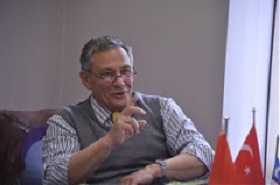EU – Baltic States, Foodstuff, Good for Business, Modern EU, Water
International Internet Magazine. Baltic States news & analytics
Saturday, 20.04.2024, 15:53
Fishing opportunities in the Baltic Sea for 2017: Commission’s proposal
 Print version
Print version |
|---|
The Commission proposes to increase catch limits for 6 out
of 10 fish stocks (Western, Bothnian and Central herring, sprat, plaice and
main basin salmon) and to decrease catch limits for 2 stocks (Gulf of Riga
herring and Gulf of Finland salmon).
The Commission is collecting more information before
proposing catch limits for the remaining 2 stocks (Western and Eastern cod).
The Commission's proposal is in line with the Commission's
Communication on Fishing Opportunities for 2017. See: Communication from the
Commission to the European Parliament and the Council, Consultation on the
fishing opportunities for 2017 under the Common Fisheries Policy, COM (2016)
396 final.
Commissioner Karmenu
Vella, responsible for the Environment, Fisheries and Maritime Affairs,
underlined that “making Europe's fisheries sustainable is a key deliverable of
the EU's Common Fisheries Policy”. He added that new fishing rules are based on
sustainability and shall be “good news” for all those who have an interest in
healthy fisheries, first and foremost fishermen themselves. (Brussels, 29
August 2016).
Advantages
In socio-economic terms the Commission’s proposal is to
improve both fishery and overall economic performance in the Baltic Sea, in
spite of significant differences across fleets segments and fisheries. This
proposal could increase both profits by €13 million and employment at sea basin
level.
The biggest proposed quota reduction concerns plaice, whose
catch limit under this proposal would rise by 95%. This reflects the good shape
of the stock, which has been growing since 2008. It is also due to the fact
that, from 2017 onwards, fishermen will have to land all plaice they catch in
an effort to eliminate the wasteful practice of discarding.
At the same time, the state of the Western Baltic cod does
not seem to have improved this year, according to the International Council for
the Exploration of the Sea (ICES). Fishing pressure from commercial and
recreational fisheries remains high, and past measures have not had the desired
effect in helping the stock to recover.
The Commission is examining with national authorities and
stakeholders – including commercial and recreational fishermen – which steps
are needed to give this stock a chance to recover, while also ensuring the
economic viability of the fishing industry.
EU states can use allocations from the European Maritime and
Fisheries Fund (EMFF) to support fishermen through a period of necessary quota
reductions. The Commission has already assured the Baltic States’ authorities
of its support in making such funding available quickly and efficiently.
In addition, the Commission has asked its scientific
advisory body STECF to analyse the impact of recreational fishing on Baltic cod
stocks and assess different possible stock management measures. The Commission
will propose catch limits for the Baltic cod stocks (Western and Eastern) once
these clarifications are available.
The proposal will be discussed by the EU-28 members’
fisheries ministers at the October Fisheries Council in Luxembourg. The Baltic
Sea Advisory Council (BSAC) has also been consulted.
Table: Overview of TAC changes
2016-2017 (figures in tones except for salmon, which is in number of pieces)
|
Stock and |
2016 |
2017 |
|||
|
Commission proposal |
Basis for proposal |
Council agreement (TAC) |
Commission proposal |
Basis for proposal |
|
|
Eastern Cod 25-32 |
41143 -20% |
Consistent with the data limited
approach |
41143 -20% |
- |
- |
|
Western Cod 22-24 |
10363 -35% |
MSY |
12720 -20% |
- |
- |
|
Western Herring 22-24 |
24797 12% |
MSY |
26274 18% |
28401 8% |
Multiannual management plan,
target fishing mortality value as referred to in Article 4(2), (3) and (4) |
|
Bothnian Herring 30-31 |
103254 -35% |
MSY |
120872 -24% |
140998 17% |
|
|
Riga Herring 28.1 |
30623 -21% |
MSY |
34915 -10% |
27429 -21% |
|
|
Central Herring 25-27, 28.2, 29, 32 |
177505 9% |
MSY |
177505 9% |
191129 8% |
|
|
Sprat 22-32 |
184336 -14% |
MSY |
202320 -5% |
282349 40% |
|
|
Plaice 22-32 |
4034 18% |
MSY |
4034 18% |
7862 95% |
MSY |
|
Main Basin Salmon 22-31 |
105850 10% |
MSY |
95928 0% |
105696 10% |
MSY |
|
Gulf of Finland Salmon 32 |
10024 -24% |
Precautionary considerations |
13106 0% |
9403 -28% |
Precautionary considerations |
Reference: European Commission, press release, in:
http://europa.eu/rapid/press-release_IP-16-2849_en.htm








 «The Baltic Course» Is Sold and Stays in Business!
«The Baltic Course» Is Sold and Stays in Business!

